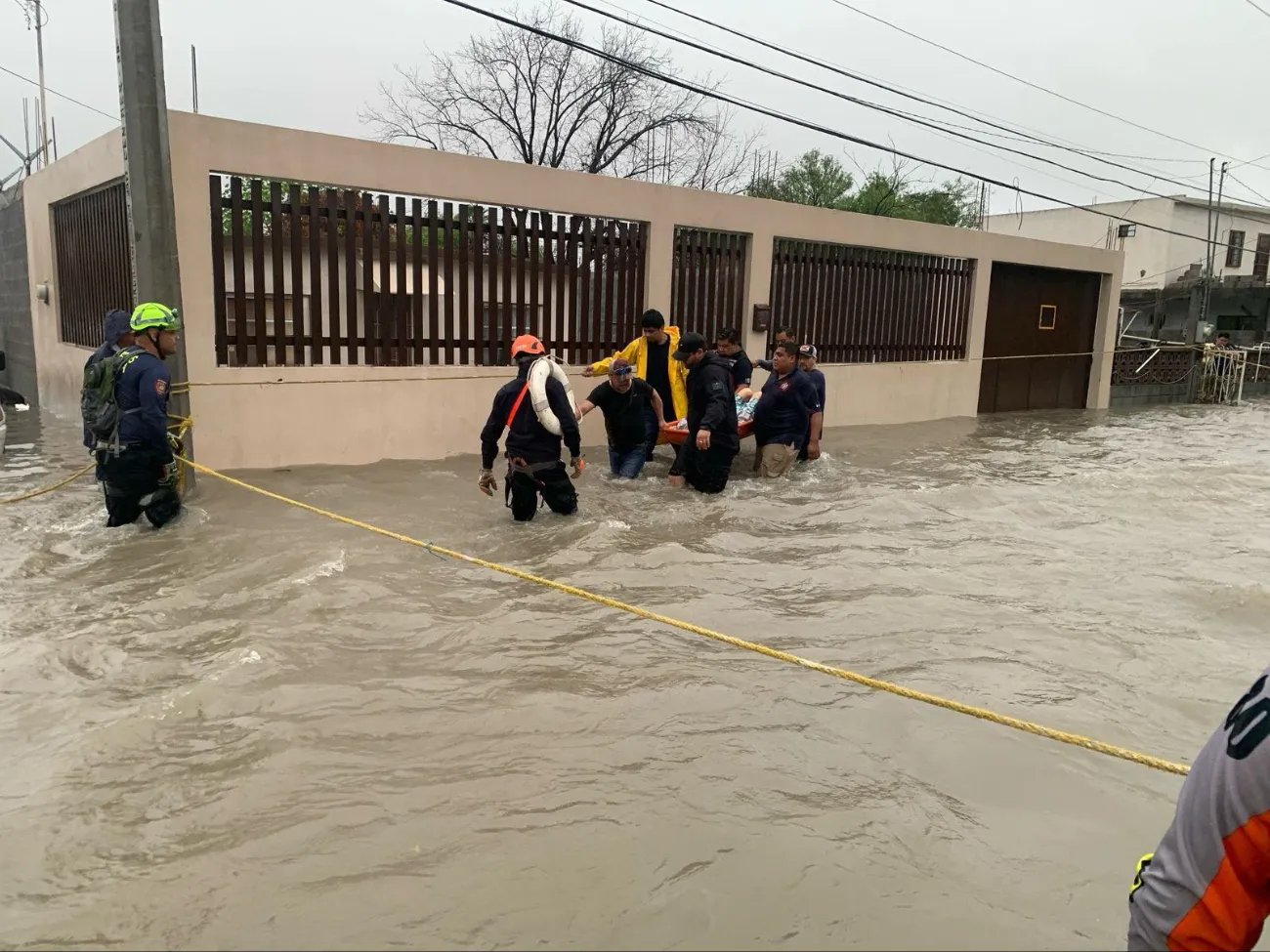“`markdown
Inundaciones Devastadoras en Reynosa: ¿Cómo Afectan a la Región del Valle del Río Grande?
Severe flooding struck the city of Reynosa, Tamaulipas, on March 27, 2025, following an unprecedented downpour that overwhelmed local drainage systems. The heavy rains, which began in the early hours, caused significant water accumulation across the city, leading to chaos and disruption for thousands of residents. As the situation unfolded, authorities declared a state of emergency to facilitate rescue and relief efforts.
The torrential rain started around 4:00 AM, with some areas receiving up to six inches of rainfall within hours. By midday, additional rainfall exacerbated the situation, transforming main roads into rivers and halting transportation. Residents in neighborhoods such as Ernesto Zedillo, Juan Escutia, and Unidad Obrera reported water seeping into their homes, forcing many to improvise barriers to protect their belongings.
In the industrial sector, the flooding had severe consequences as well. Vehicles in the Corning maquiladora parking lot were submerged, trapping employees inside. Essential services were disrupted, with hospitals like IMSS and ISSSTE experiencing water leaks, raising alarm among patients and medical staff.
The flooding also had a significant impact on transportation. Access to the Reynosa-Hidalgo international bridge became increasingly difficult, complicating the daily commute for students traveling to Texas. The SENTRI line, a crucial passage for many, faced slow traffic due to standing water and reduced lanes, leaving drivers stranded on flooded avenues.
Local authorities reported multiple traffic accidents attributed to hazardous conditions on the streets. Poor visibility and wet pavement contributed to the chaos, prompting officials to urge the public to avoid flooded areas. In response, the Industrial Autonomous Union of Maquiladoras requested a work suspension to ensure the safety of workers during the crisis.
As the situation escalated, the Mexican Army activated the DNIII plan to assist those affected. Military personnel collaborated with local authorities, deploying mobile units to evacuate residents from their homes and transport them to temporary shelters. This coordinated response was crucial in addressing the immediate needs of those impacted by the floods.
Earlier warnings had been issued by Civil Protection Tamaulipas, which declared a climate alert for Reynosa due to the ongoing storm. The alert included predictions of intense rains, wind gusts up to 70 km/h, and the possibility of hail. Reports indicated that the accumulated precipitation in the region was nearing 300 mm within a 24-hour period, raising concerns about further flooding.
As the day progressed, rescue operations continued with reports of residents needing boats to escape their homes. Civil Protection and firefighters remained on high alert, conducting tours of neighborhoods at risk of severe flooding. Community organizations and volunteers mobilized to provide aid, emphasizing the importance of community support in times of crisis.
Environmental concerns also arose from the flooding. The potential contamination of water sources due to the inundation poses a long-term threat to public health. Additionally, agricultural areas in the surrounding region have been severely impacted, threatening local food supplies and raising alarms about food security.
The long-term economic impact of this disaster remains uncertain. Experts warn that the flooding could have lasting effects on trade and tourism in the region, which are vital to the local economy. As recovery efforts unfold, the focus will be on rebuilding infrastructure and ensuring that the community can bounce back from this crisis.
In conclusion, the devastating floods in Reynosa have prompted a comprehensive emergency response from local and federal authorities. With thousands displaced and significant damage reported, the situation remains critical. Residents are advised to stay informed, prioritize their safety, and support one another as the community works towards recovery.
“`






Leave a Comment